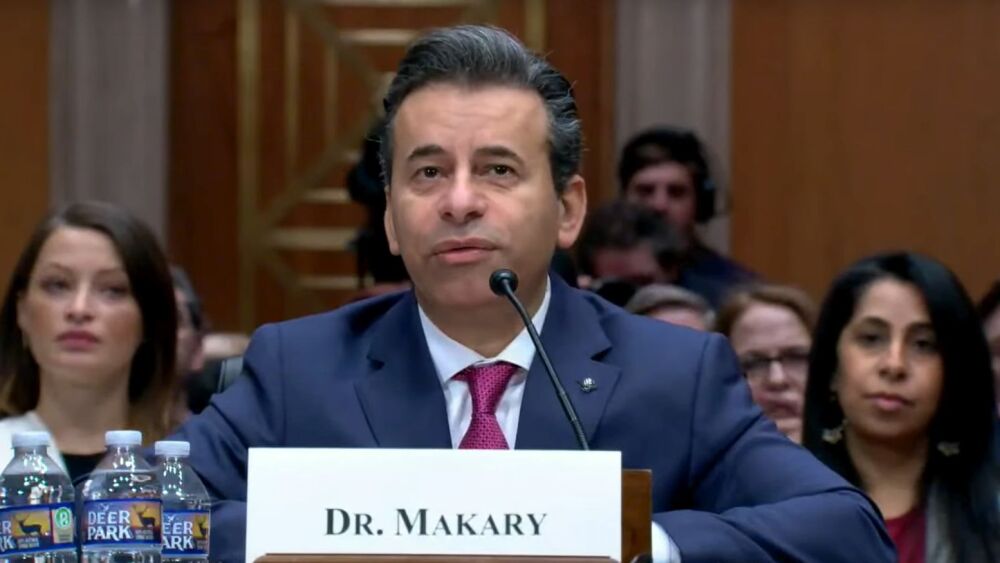March 2, 2017
By Mark Terry, BioSpace.com Breaking News Staff
The elevator pitch is called just that because you’re supposed to sell your idea or yourself in the length of time of an elevator ride.
The pitch concept may have come out of the movie industry, where would-be scriptwriters or directors needed to pitch their ideas to busy and extremely skeptical producers or studio executives.
Here’s an example of a movie elevator pitch:
A cyborg from the future is sent to kill the future mother of a resistance leader who will save humanity.
The Terminator.
Got it?
Not Quite That Simple
The trick for a job elevator pitch isn’t necessarily to break your scientific research down to a single sentence, although if you can, great.
But imagine it as a kind of speed dating, where you have approximately two minutes to sum up your research, how would you do it? This is the sort of thing one might find oneself doing at a job interview, or for a presentation, or, simply meeting someone, a colleague, a potential employer, somewhere at a conference and being asked, “So, what do you do?”
In an article published in Nature back in 2013, Nancy Baron of Santa Barbara, California-based COMPASS, an organization that assists scientists in communicating their research, said, “The biggest challenge for scientists is they suffer the curse of too much knowledge. They’ve got a bunch of things they want to talk about. But really, at the core of it, if someone has just one moment, what do you want to say?”
She suggests breaking it into four key topics or components. They are:
1. The problem.
2. Why it matters.
3. Potential solutions.
4. The benefits of fixing it.
As an example, she refers to a scientist who studied jellyfish population trends. Typically that scientist began with a description of the research problem that “mentioned how the life stage called a polyp tolerates harsh conditions.” He then went on to include lack of long-term data, complex interactions such as overfishing, eutrophication and aquaculture, etc. But after time, it came down to: “Humans have degraded marine ecosystems, making them more favorable for jellyfish.”
That seems, actually, like it’s too brief. But to be able to follow it up with two or three sentences that explain how you’re studying the problem then it is just about perfect.
Why It Matters
The jellyfish example only hints at: Why does your research matter?
Nancy Blount, assistant director for society communications at the American Chemical Society in Washington, DC, said in the Nature article, “They talk about the details of the mechanism, but they don’t talk about why it matters to other people or how it could improve our lives.”
The example she gives is that most people “won’t care about research on one step in the synthesis of a molecule. But they do care if a scientist tells them that he or she is working on a drug for Alzheimer’s disease.”
To go back to the jellyfish example, why is that important? Without being a jellyfish expert, it doesn’t take too much online research to find out why. Jellyfish can cause all sorts of stinging problems for swimmers—and hence, tourism—on ocean beaches. And swarms of jellyfish have blocked the cooling pipes of a nuclear reactor in the Baltic Sea in Sweden, causing it to shut down. And in the 1990s, in the Black Sea, jellyfish caused the collapse of a $350 million fishing industry. Any one of those examples would be a dramatic second sentence—not that your research necessarily needs a dramatic explanation. But what you need is some sort of hook that answers: Who cares?
Who’s the Listener?
Tailor your speech for your audience. Everybody’s been cornered at a cocktail party or, more likely, at a family gathering and asked, “So, how’s your research going?” or “What is it you do?”
Your elevator pitch is going to be different for Aunt Mable than it is for the vice president of a biotech company (unless your Aunt Mable IS the vice president of a biotech company). If you are pitching, say, the head of a research department, technology may be the focus; if you are pitching an executive, the commercialization potential of the work might be the focus.
What to Say vs. How to Say It
Once you’ve decided what to say, then you need to figure out the best way to say it. Keep in mind, we’re discussing an elevator pitch, not your presentation at a scientific conference. The Nature article points out, “Avoiding technical jargon such as gene names is key. Navneeta Pathak, a cell biologist at the University of California, San Diego, and one of the winners of the ASCB elevator-speech contest, studies cancer metastasis but chose not to use that word in her speech. Instead, she described how tumor cells break away and travel through the blood to other parts of the body.”
Although, again, audience is key here. If you’re speaking to a technical audience, then avoiding jargon might seem like you’re talking down to them. Nonetheless, every area has its specialized vocabulary. Molecular biologists and geneticists are familiar with a lot of genes, but they may not have every pathway on the tip of their tongue.
Practice Makes Perfect
A researcher who just goes by Uyen, wrote a post on elevator pitches for scientists on The Postdoc Way blog in 2013. The example Uyen uses was to take an abstract for a research paper submitted for peer review that started with, “Statins are potent inhibitors of cholesterol biosynthesis and are clinically beneficial in preventing cardiovascular diseases….”
Uyen then used three steps:
Step 1: Eliminate jargon.
Step 2: Draft the elevator pitch on paper.
Step 3: Practice the elevator pitch out loud with friends or family members.
The pitch Uyne developed, aimed at scientists, was: “Do you know that 32 million Americans are taking statins for their high cholesterol? While statins have been shown to improve the heart function by reducing blood cholesterol levels, one of the major side effects associated with long-term use of statin is the development of muscle pain. My research focuses on separating the cellular pathways leading to the beneficial effects and muscle toxicity mediated by statins in order to identify new drug molecules that only activate the pathway that’s good for the heart. Using various cell-based assays, we have identified a drug combination that mimics the good effects of statins but are devoid of the muscle toxicity associated with their use.”
One of the nice things about this particular pitch is that most knowledgeable people can understand it, but people with expertise in the field who have an interest can follow up with a variety of questions. For example: How are you separating the cellular pathways? Which pathway are you focusing on that’s good for the heart? What type of assays are you using? What’s the drug combination?
And an executive might say, “So, you think you might have a new statin? Because that could be worth a few billion if it worked better than what’s out there.”
A Few More Tips
Do you have to write your pitch down word for word? That’s up to you. When you give a talk, do you write it word for word and then read it to the audience? Or do you use your PowerPoint slides as memory nudges? Do you use an outline or highlights?
In the Nature article, Richard Fox said, “Researchers who do write out a complete oration should not try to memorize and repeat it verbatim, because that can come across as unnatural. It is helpful to practice with family and friends, or to convene a small group of people from different backgrounds to give feedback.”
Baron notes that using Twitter with its 140 character limit is good practice for being concise.
Uyne noted that it took three hours to distill that abstract down to that elevator pitch. Take time to do it right.
Otherwise, much of what makes for a good elevator pitch is similar to good interviews or presentations: make eye contact, try to convey enthusiasm, be careful with your body language. Watch your audience to evaluate how it’s going. Is the listener staring blankly at you? Maybe you should stop and see if they have a question. Or possibly bring in details that might interest them.
Lynne Cassimeris, a cell biologist at Lehigh University in Bethlehem, Pennsylvania, who was also an ASCB contest judge, notes that the point of an elevator speech is to get the listener interested. You don’t need—or want—to tell them everything. She told Nature, “They’ll ask if they want to know more.”
Check out the latest Career Insider eNewsletter - March 2, 2017.
Sign up for the free bi-weekly Career Insider eNewsletter.





